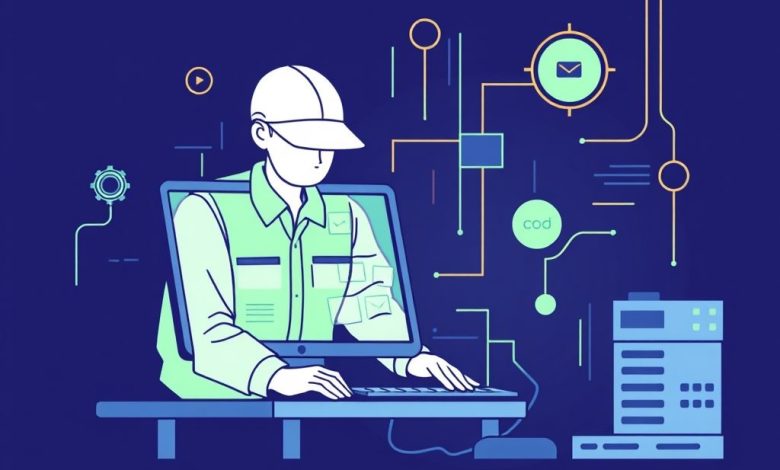Field Service Management with Remote Troubleshooting Enhancing Efficiency and Customer Satisfaction

Introduction
Field Service Management (FSM) is a crucial aspect of modern business operations, especially for companies that provide services directly to customers. With the rise of technology, FSM has evolved significantly, incorporating innovative tools and techniques to enhance efficiency and customer satisfaction. One such advancement is the integration of remote troubleshooting capabilities into FSM systems.
Remote troubleshooting allows technicians to diagnose and resolve issues remotely, reducing the need for physical visits and improving response times. This approach not only benefits customers but also helps businesses streamline their operations and reduce costs. In this article, we’ll explore the concept of Field Service Management with Remote Troubleshooting, its benefits, challenges, and how it can be implemented effectively.
What is Field Service Management?
Field Service Management refers to the process of managing and coordinating work activities performed outside of a traditional office environment. It involves scheduling appointments, dispatching technicians, tracking job progress, and ensuring efficient completion of tasks. FSM systems typically include features such as:
- Scheduling and dispatch management
- Resource allocation
- Job estimation and pricing
- Inventory management
- Customer relationship management
These components work together to optimize field operations and improve overall service delivery.
The Rise of Remote Troubleshooting
Remote troubleshooting, also known as remote diagnostics or remote support, has become increasingly popular in recent years. This technology allows technicians to diagnose and fix issues from a distance, eliminating the need for on-site visits in many cases. Some key aspects of remote troubleshooting include:
- Real-time video sharing
- Screen sharing
- File transfer capabilities
- Voice and chat communication
- Access to device information and logs
By leveraging these features, technicians can often resolve issues quickly and efficiently without requiring physical presence.
Benefits of Combining Field Service Management with Remote Troubleshooting
- Improved Efficiency
- Reduced travel time and associated costs
- Faster issue resolution due to immediate access to devices
- Ability to handle more jobs simultaneously
2. Enhanced Customer Experience
- Quicker response times
- Less disruption to daily routines
- Increased trust and satisfaction
3. Cost Savings
- Lower operational expenses
- Reduced wear and tear on company vehicles
- Extended equipment lifespan through preventive maintenance
4. Data Collection and Analysis
- Better insights into common issues and trends
- Opportunities for continuous improvement in service processes
- Potential for predictive maintenance strategies
5. Scalability and Flexibility
- Easier to expand operations to new areas
- Adaptability to changing market demands
Challenges in Implementing Remote Troubleshooting
While the benefits of combining FSM with remote troubleshooting are significant, there are several challenges that organizations may face when implementing this approach:
- Technical Limitations
- Not all devices or systems are compatible with remote access
- Internet connectivity issues can hinder real-time communication
- Security concerns related to remote access to sensitive data
2. Training and Skill Development
- Technicians need to be proficient in using remote diagnostic tools
- Continuous training is essential to keep up with evolving technologies
- Balancing the use of advanced tools with traditional hands-on skills
3. Privacy and Security Concerns
- Ensuring secure transmission of sensitive customer data
- Compliance with data protection regulations
- Addressing potential cybersecurity risks
4. Customer Acceptance
- Educating customers about the benefits of remote troubleshooting
- Building trust in the technology
- Handling situations where customers prefer on-site visits
5. Integration with Existing Systems
- Seamless integration with current FSM software
- Standardization of processes across different teams
- Potential need for system upgrades or replacements
Best Practices for Implementing Field Service Management with Remote Troubleshooting
To ensure successful implementation and maximize the benefits of FSM combined with remote troubleshooting, consider the following best practices:
- Choose the Right Tools
- Select FSM software with robust remote troubleshooting capabilities
- Ensure compatibility with various devices and operating systems
- Consider cloud-based solutions for scalability and accessibility
2. Develop Comprehensive Training Programs
- Provide thorough training on both FSM software and remote diagnostic tools
- Regular workshops and refresher courses to keep technicians updated
- Include role-playing exercises to simulate real-world scenarios
3. Establish Clear Communication Channels
- Implement secure communication protocols (e.g., encrypted messaging apps)
- Set up clear escalation procedures for complex issues
- Create user-friendly interfaces for easy navigation during remote sessions
4. Prioritize Data Security
- Implement strong encryption methods for all data transmitted
- Conduct regular security audits and updates
- Educate employees about best practices for handling sensitive information
5. Foster Customer Trust
- Provide transparent explanations of how remote troubleshooting works
- Offer options for customers who prefer traditional service methods
- Regularly collect feedback to improve the customer experience
6. Monitor Performance Metrics
- Track key performance indicators such as first-time fix rates and resolution times
- Analyze data to identify areas for improvement
- Adjust strategies based on insights gained from metrics
Conclusion
Field Service Management combined with Remote Troubleshooting represents a significant shift in how businesses deliver services. By leveraging technology to enhance efficiency and customer satisfaction, organizations can gain a competitive edge in their respective markets.
While there are challenges to implementation, the benefits of improved efficiency, enhanced customer experience, and cost savings make this approach increasingly attractive to companies in the field service industry. As technology continues to evolve, it’s likely that we’ll see even more innovative solutions emerge in the realm of Field Service Management and Remote Troubleshooting.
For field service managers looking to implement these technologies, it’s crucial to stay informed about the latest developments, invest in proper training, and continuously evaluate and refine their processes. By doing so, they can ensure their organization remains at the forefront of efficient and effective service delivery in today’s digital age.




